Hidden doors offer a unique blend of style and practicality.
They seamlessly blend into your space, enhancing privacy and maximizing storage while adding a touch of mystery.
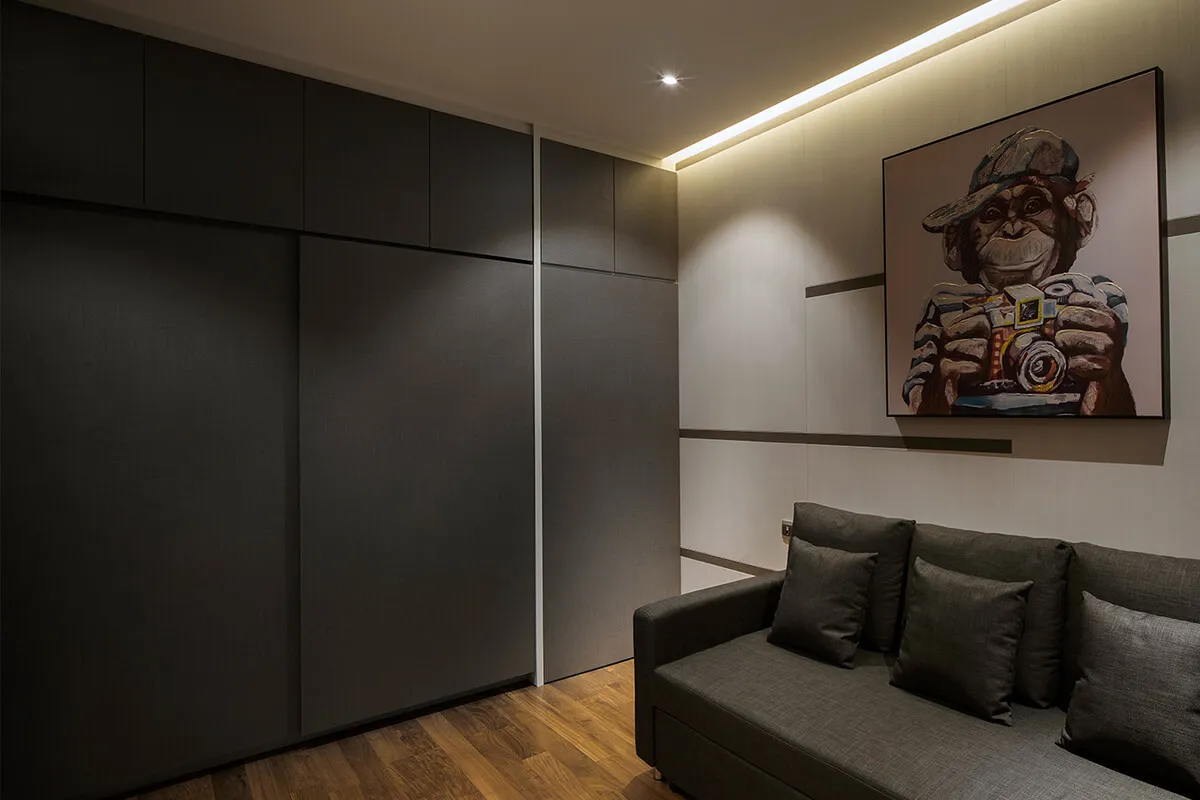
Customizable to suit various interior designs, hidden doors are perfect for transforming a room with both functionality and aesthetic appeal.
What Are Hidden Doors?
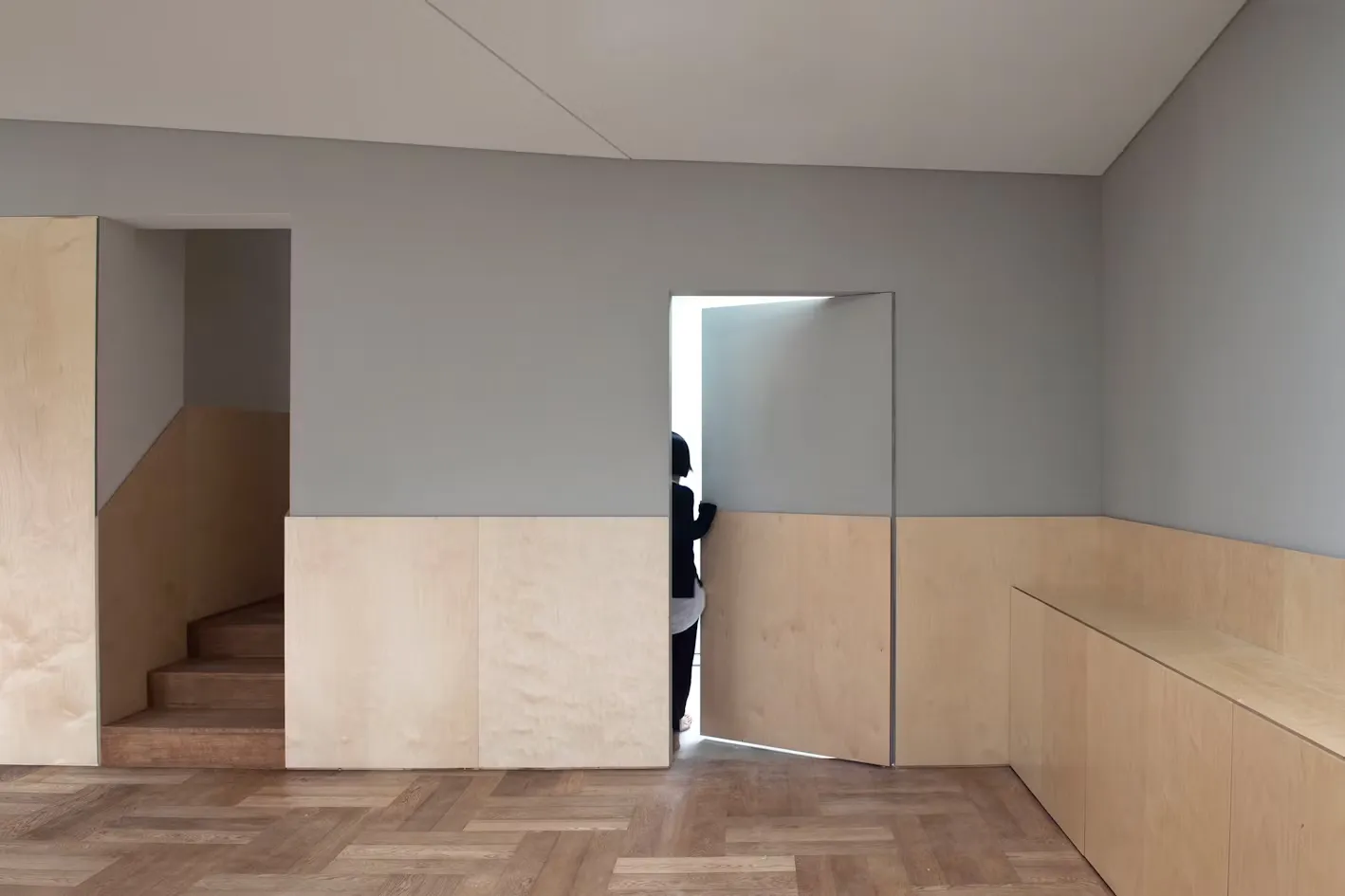
Hidden doors, also called secret or concealed doors, are cleverly designed to blend into your home’s decor.
When closed, they become almost invisible, creating a sense of mystery and surprise when opened.
Originally used in mansions and castles for secret passages, hidden doors have evolved into a modern design feature in contemporary homes.
35 Hidden Door Ideas
Hidden doors are a fascinating way to elevate your home, offering both practicality and a touch of mystery.
Whether you want to enhance privacy, utilize space, or add an intriguing design element, these ideas will inspire you.
1. Bookshelf Doors

Combine functionality with style by hiding doorways behind bookshelves.
Perfect for libraries or hallways, they create a timeless, classic look while keeping secret spaces discreetly hidden.
2. Mirror Hidden Doors
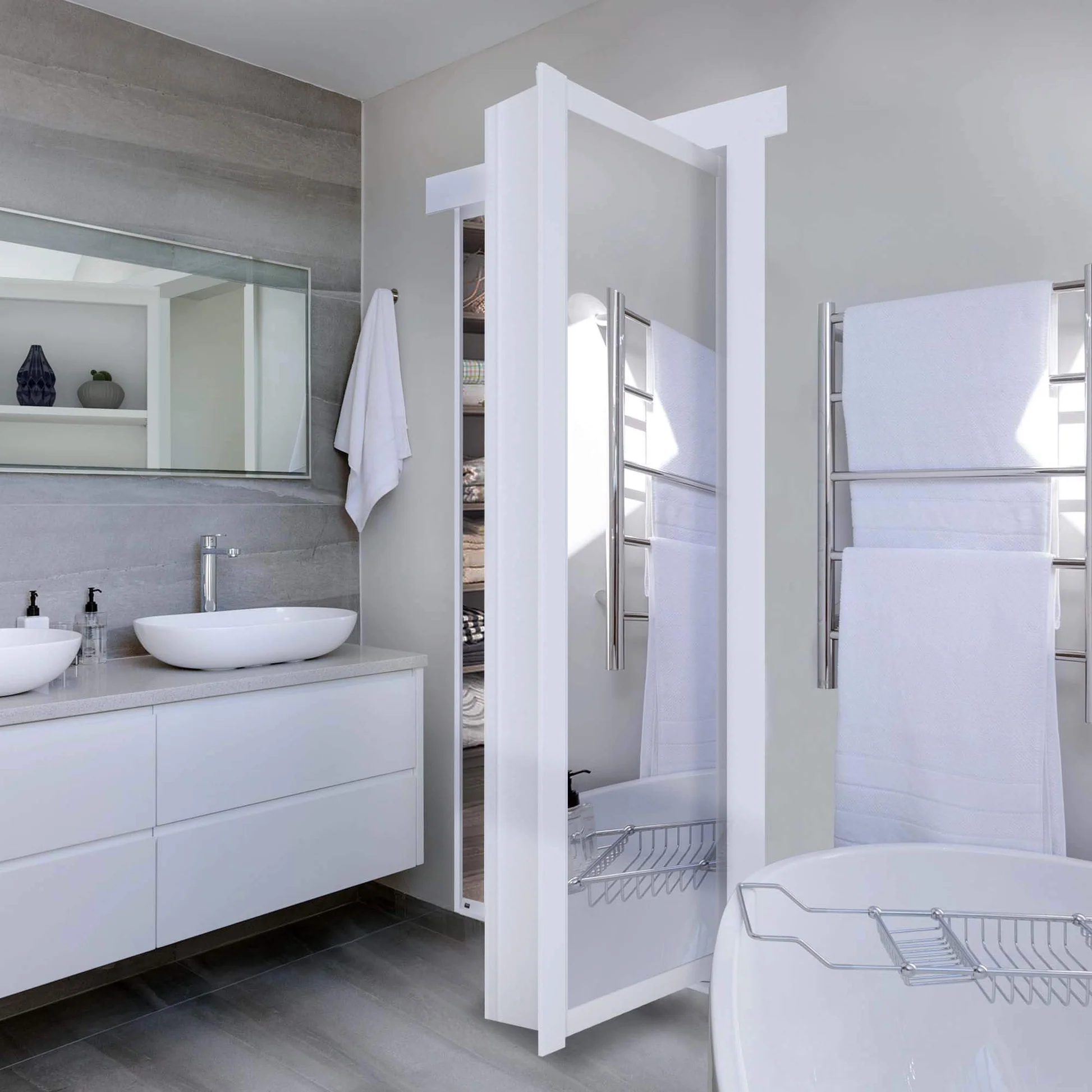
Reflect light and make your space appear larger with a mirror door.
These clever designs hide entrances while adding an elegant, modern touch.
3. Pantry Doors

Camouflage your kitchen pantry or even a staircase with a hidden door.
These designs are both functional and stylish, maintaining a clutter-free look.
4. Under-the-Stairs Doors

Make use of unused space by adding hidden doors beneath the stairs.
Ideal for safes, storage, or creating a cozy reading nook.
5. Fireplace Entrances
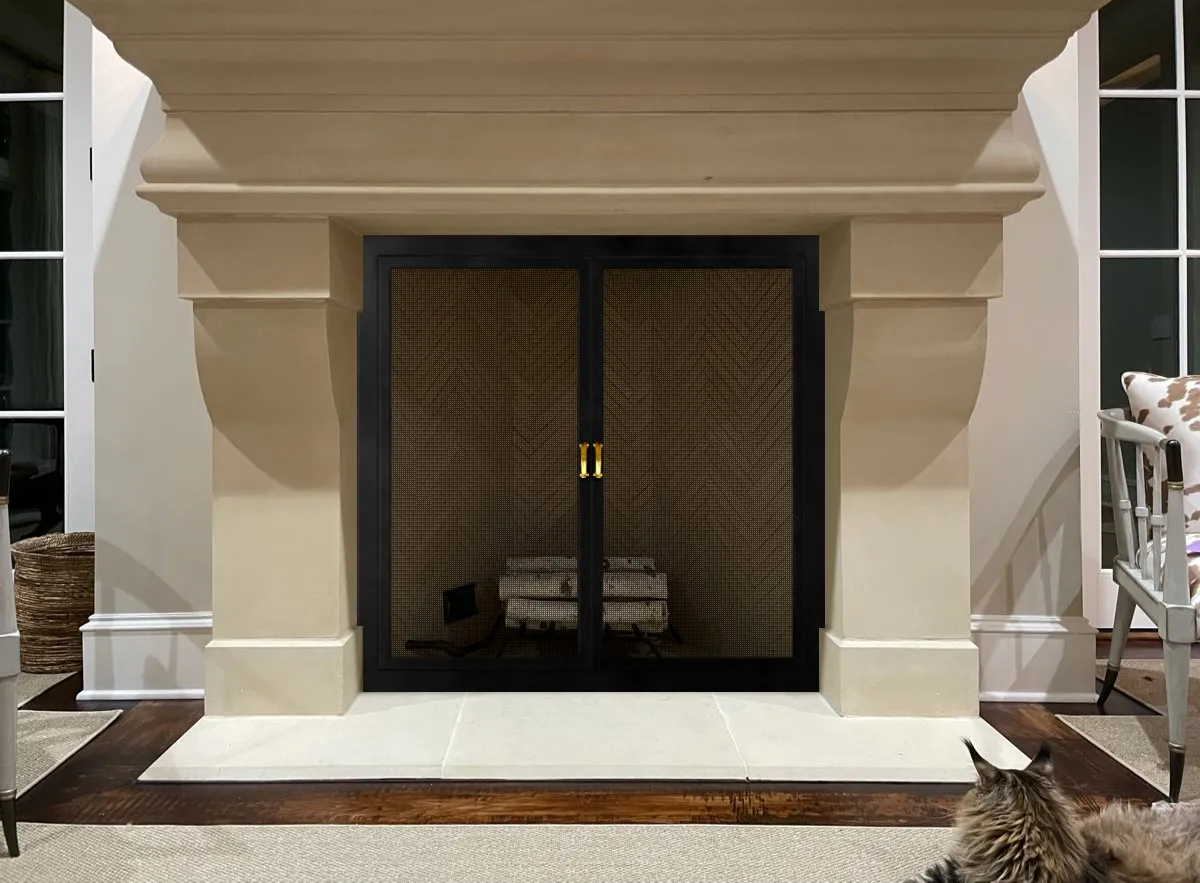
Transform your fireplace into a dramatic hidden door.
It’s a bold, creative way to conceal secret rooms or play areas.
6. Jib Doors

These seamless doors blend perfectly with wall paneling.
Jib doors are great for maintaining symmetry and a clean, sophisticated aesthetic.
7. Vertical Slat Hidden Doors
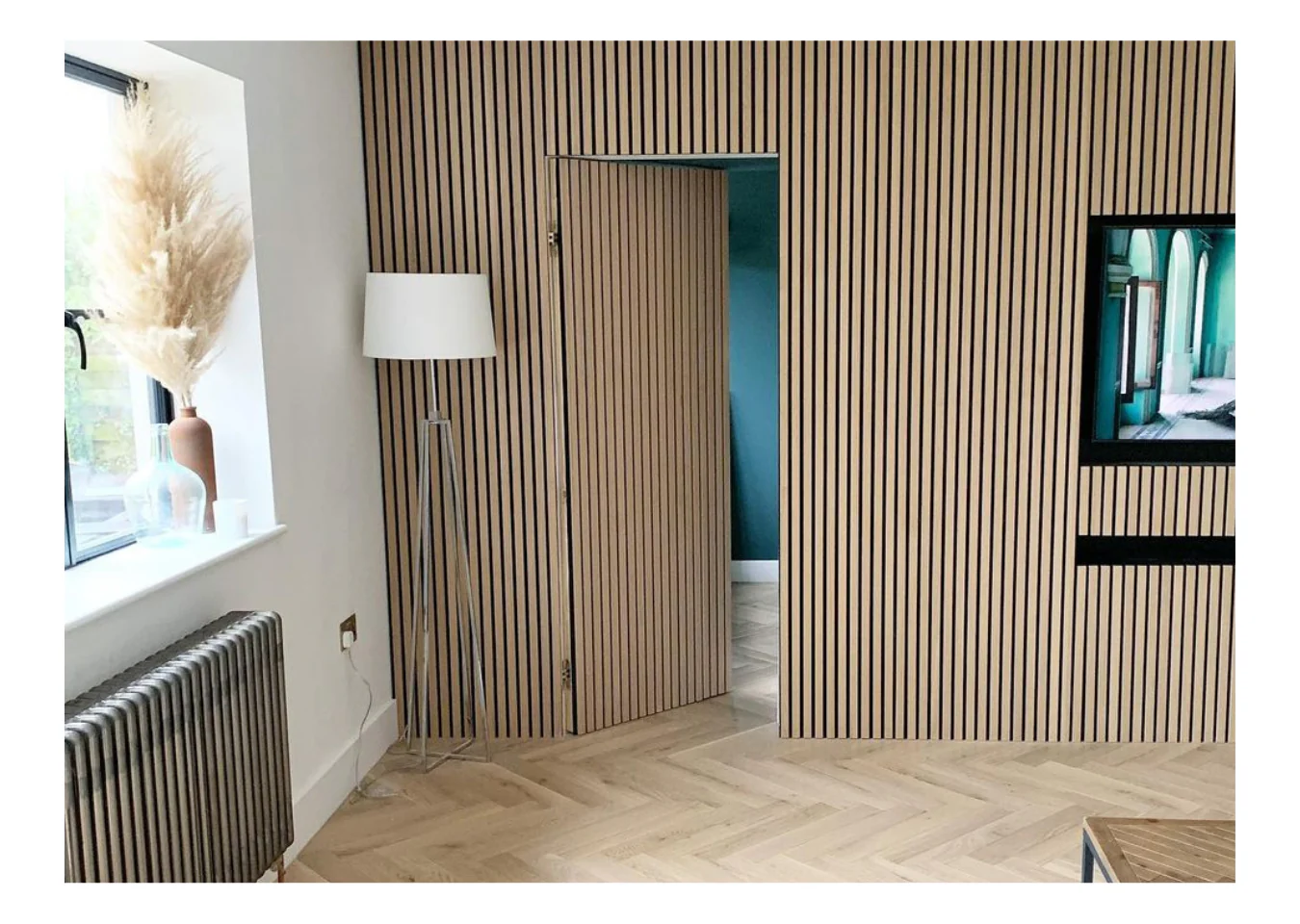
Add texture and modern appeal with vertical slats.
These designs not only hide functional spaces but also enhance the room’s visual interest.
8. Sliding Pocket Doors
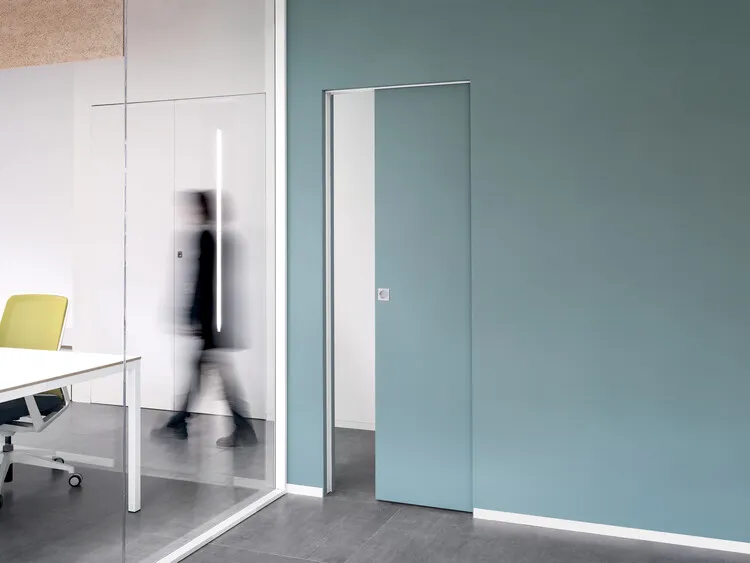
Perfect for compact spaces, these doors slide into the wall, disappearing when open.
They’re a sleek solution for modern homes.
9. Beadboard Hidden Doors

Use vertical paneling to camouflage doors.
This is a charming option for rustic, coastal, or cottage-inspired interiors.
10. Pivot Doors

Create a sleek, minimalist entrance with a pivot door that rotates on a central axis.
It’s ideal for contemporary spaces.
11. Attic Doors

Hidden attic entrances are perfect for creating serene retreats or additional storage while keeping the design seamless.
12. Bathroom Secret Entrances

Disguise en suite doors or pool access points with cleverly hidden designs.
These are perfect for maintaining a clean, luxurious look.
13. Chalkboard Hidden Doors
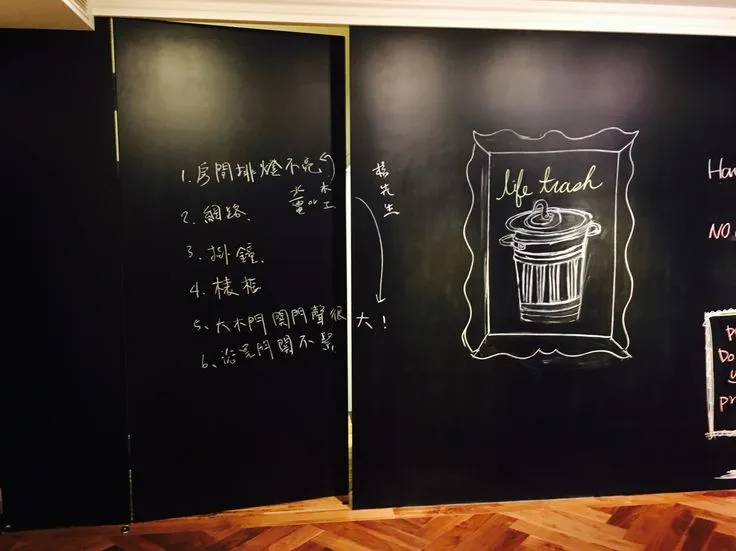
Turn your hidden door into a writable surface with chalkboard paint.
Great for notes, art, or a fun touch in kids’ rooms.
14. Under-Floor Panels

Conceal emergency shelters, wine cellars, or relaxation spaces beneath floor panels.
It’s a subtle and secure storage solution.
15. Convertible Furniture Doors

Combine hidden doors with furniture for multi-functional spaces.
Think fold-away desks or Murphy beds with concealed entrances.
16. Stone Wall Entrances

Blend hidden doors into rustic stone walls.
Perfect for garages, wine cellars, or outdoor spaces with a natural vibe.
17. Sliding Kitchen Islands

Reveal hidden stairways or storage beneath your kitchen island.
It’s a clever way to maximize utility in a modern kitchen.
18. Library Ladder Doors

Combine a bookshelf with a library ladder and hidden door for a secret reading nook or passage to another room.
19. Wardrobe Hidden Doors

Add magic to your space by hiding entrances behind ornate wardrobes.
Perfect for lounges, playrooms, or even secret lounges.
20. Fireplace Slides

Take it up a notch with a slide hidden behind a fireplace.
Fun and functional, it’s a playful addition for families.
21. Hidden Home Bars

Conceal your bar behind cabinetry or bookshelves.
It’s a stylish and sophisticated way to entertain guests.
22. Smart Hidden Doors
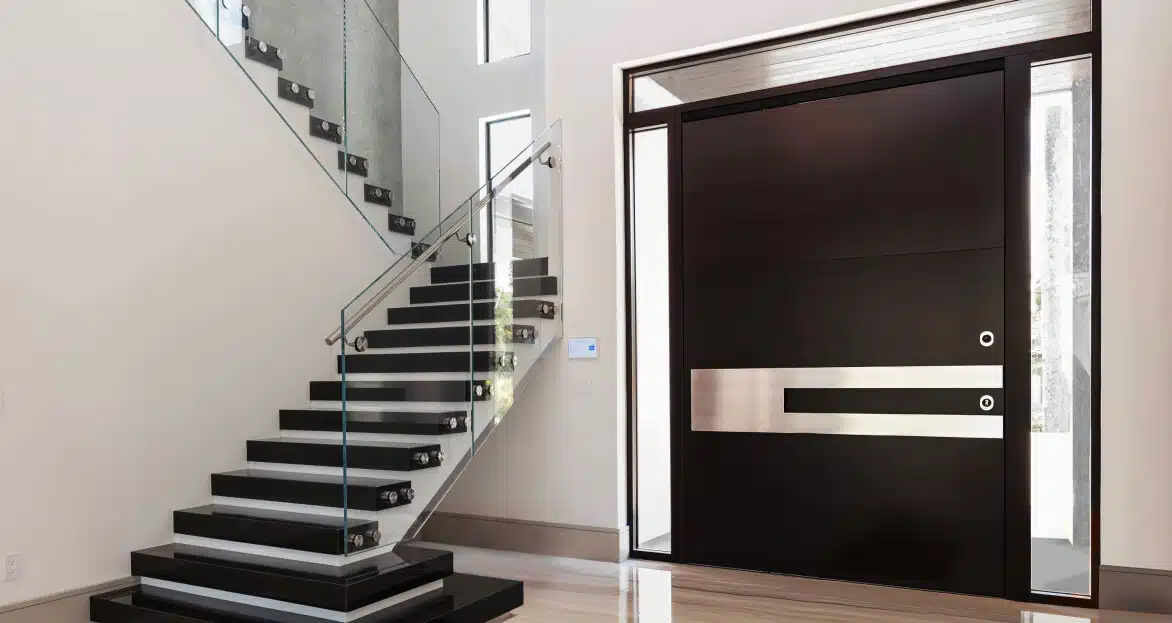
Incorporate modern technology like biometric locks or motion sensors.
These high-tech doors bring convenience and innovation to your home.
23. Garage Wall Doors
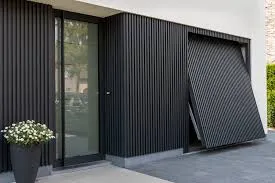
Hide tools or equipment in garage walls with discreet panels.
These hidden doors keep things organized while maintaining a sleek look.
24. Acoustic Doors

Soundproof hidden doors are perfect for studios, home theaters, or any space needing quiet.
They blend seamlessly into your walls.
25. Whole Hidden Floors
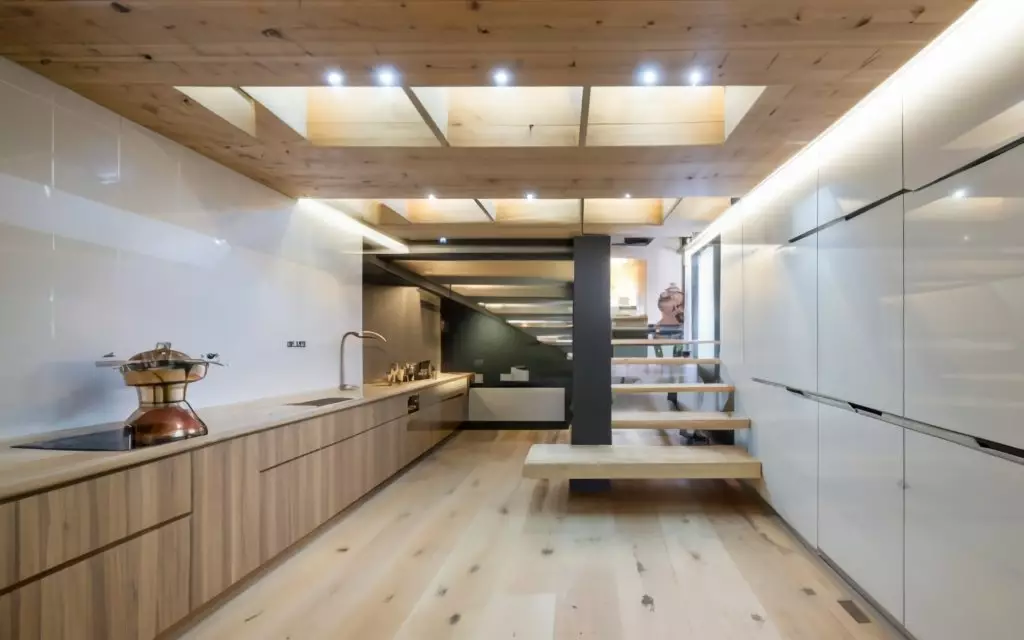
Use hydraulic systems to reveal entire secret levels.
Great for private retreats or creating extra living spaces.
26. Gym Doors

Disguise entrances to your home gym with hidden wall panels.
These doors create a distraction-free workout space.
27. Poolside Bathroom Doors

Keep pool areas tidy with hidden bathroom doors.
It’s a convenient and stylish solution for outdoor spaces.
28. Outdoor Secret Doors
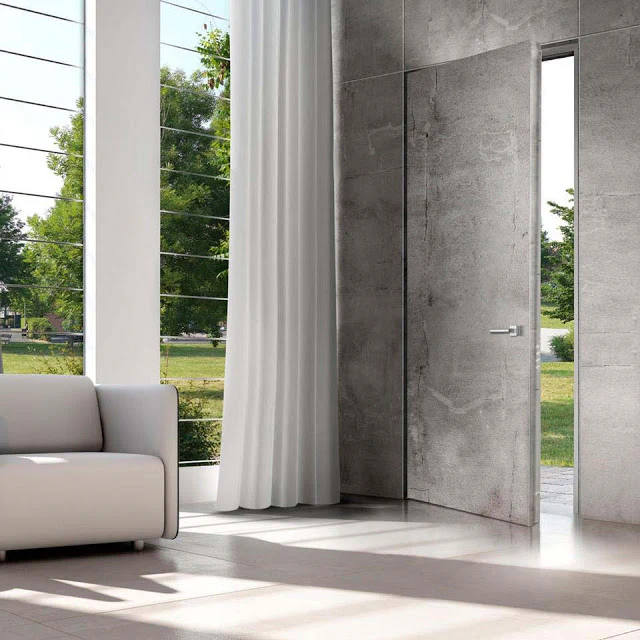
Blend entrances into your garden or patio with naturalistic designs.
Perfect for concealing sheds or storage areas.
29. Basement Wine Cellars

Create a luxurious hidden entrance to your wine cellar with floor panels or cabinetry.
It’s both elegant and secure.
30. Hallway Wainscoting Doors

Hide doorways in long hallways with wainscoting panels.
These doors add a seamless and sophisticated touch to your home.
31. Murphy Door Hidden Behind Cabinets

Install a Murphy door that hides behind cabinetry. It offers a perfect disguise for a pantry, closet, or a secret passage.
32. Folding Wall Doors
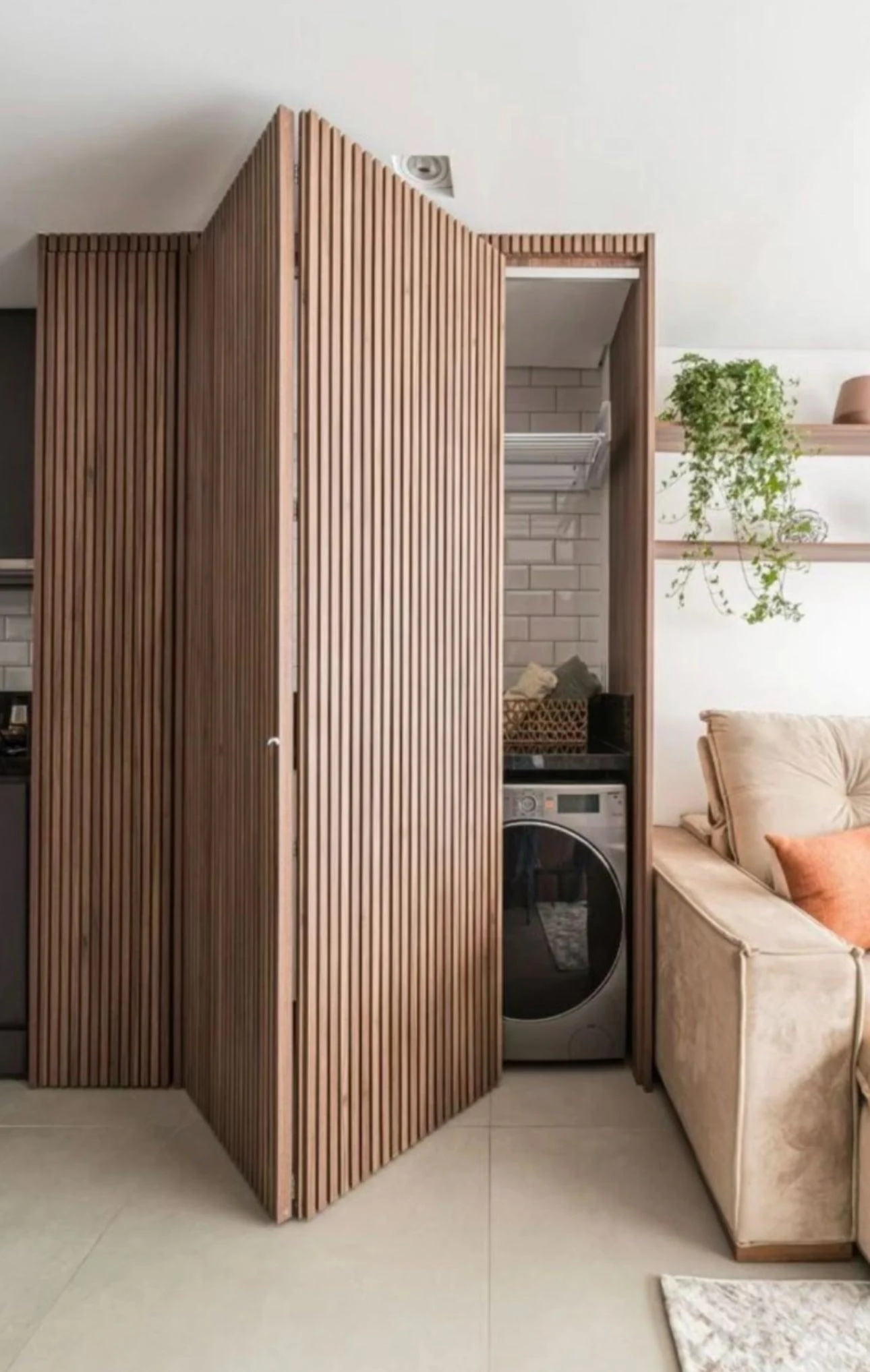
Incorporate folding wall doors that expand into hidden spaces, perfect for creating multipurpose areas while maintaining sleek, minimalistic aesthetics.
33. Vintage Locker Doors
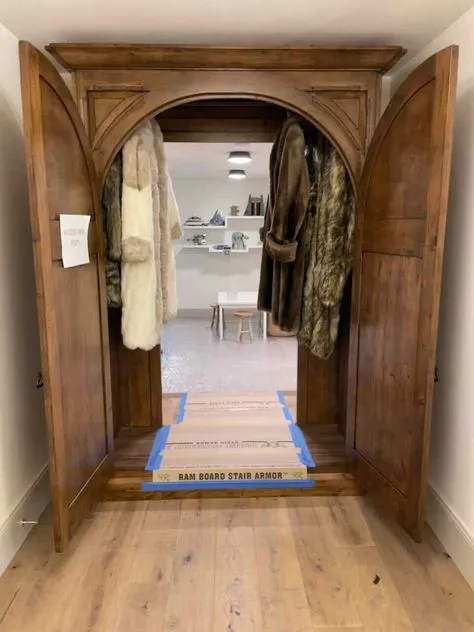
Use vintage lockers as a hidden door solution. They blend with industrial decor while providing access to private rooms or storage spaces.
34. Hidden Shower Doors
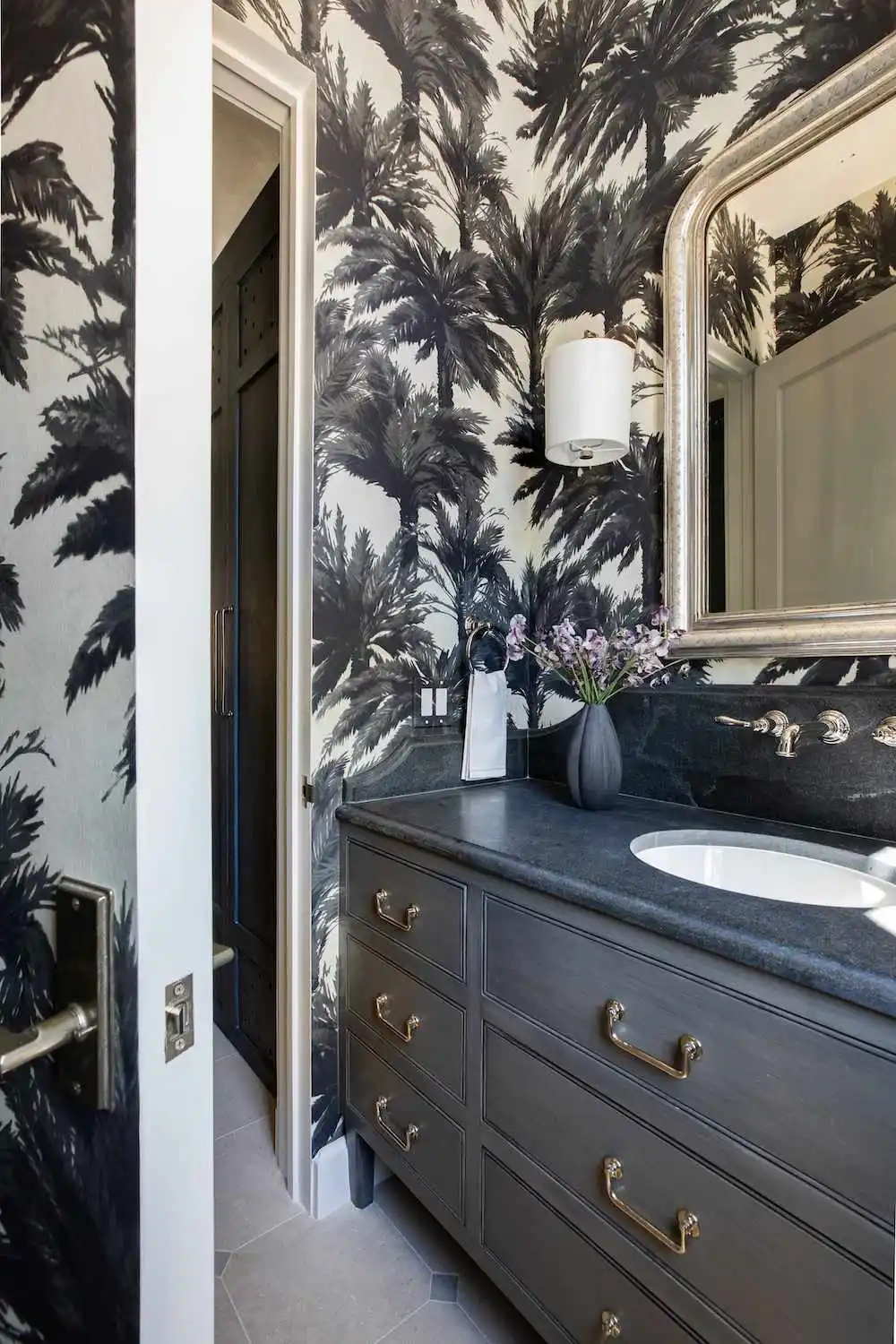
Opt for a concealed shower entrance in a bathroom. With seamless walls and clever design, the door disappears, offering an uninterrupted flow in the space.
35. Art Niche Doors
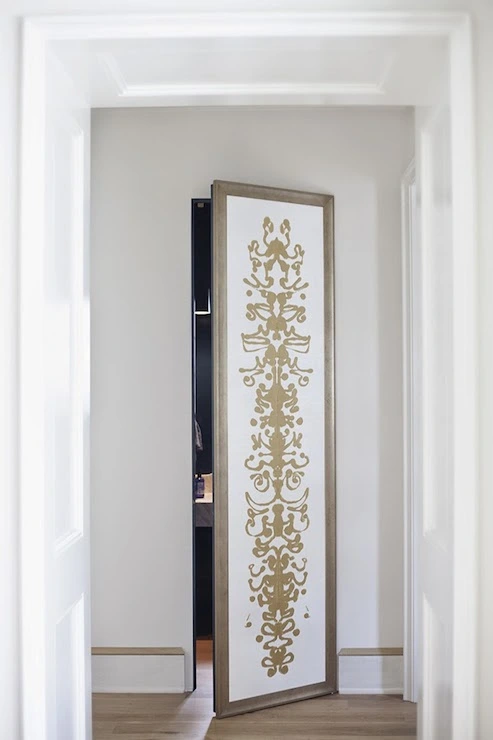
Install a hidden door that functions as a piece of art. Whether it’s a mural, sculpture, or framed painting, it offers functionality while enhancing the design.
Conclusion

Hidden doors offer a unique way to blend creativity, function, and surprise in your home.
From secret rooms to elegant design features, they maximize space and enhance aesthetic appeal.
With endless styles like mirrored, bookshelf, and mural doors, hidden entrances can transform any area.
Ready to add a hidden door to your home?
Explore these clever ideas and create your own secret passage today.
Let your space come alive with a touch of mystery and style!
FAQs About Hidden Doors
1. What is the purpose of a hidden door?
Hidden doors serve various purposes, from enhancing privacy and securing valuables to maximizing storage space and creating unique design features.
They can also be used to conceal less aesthetic areas, like pantries, laundry rooms, or utility spaces.
2. How do you make a simple hidden door?
To build a simple hidden door, start with a flush door that matches the wall or furniture around it.
Use hidden hinges, touch-latch mechanisms, and matching materials like paint, wallpaper, or wood paneling to blend the door seamlessly with its surroundings.
3. Are hidden doors expensive?
The cost of hidden doors varies depending on their design, materials, and mechanisms.
Simple hidden doors using basic materials can be affordable, while customized options with high-tech features like smart locks or automated systems tend to be more expensive due to the complexity of their construction and installation.
4. Do hidden doors add value to a home?
Yes, hidden doors can add value to a home by providing unique features that appeal to buyers.
They improve functionality, enhance aesthetics, and offer an exclusive touch that sets your property apart from others on the market.
5. What type of hardware is best for hidden doors?
The best hardware depends on your door design.
Pivot hinges are ideal for sleek, modern designs, while sliders or pocket doors are great for space-saving solutions.
For a clean look, hidden hinges and touch-latch systems eliminate the need for visible handles.
![Apro logo - 25 Types of Door Hinges and Their Best Uses [Dezember 2025] - APRO Apro logo](https://aprowin.com/wp-content/uploads/2024/08/Apro-logo.webp)
![A bifold glass door opens to a serene courtyard featuring a beautiful fountain at its center - 25 Types of Door Hinges and Their Best Uses [Dezember 2025] - APRO A bifold glass door opens to a serene courtyard featuring a beautiful fountain at its center](https://aprowin.com/wp-content/uploads/2024/10/A-bifold-glass-door-opens-to-a-serene-courtyard-featuring-a-beautiful-fountain-at-its-center.webp)
![Sunflower view through modern black aluminum window frame - 25 Types of Door Hinges and Their Best Uses [Dezember 2025] - APRO Sunflower view through modern black aluminum window frame](https://aprowin.com/wp-content/uploads/2024/10/Sunflower-view-through-modern-black-aluminum-window-frame.webp)
![Modern entrance featuring glass doors and awning for commercial projects - 25 Types of Door Hinges and Their Best Uses [Dezember 2025] - APRO Modern entrance featuring glass doors and awning for commercial projects](https://aprowin.com/wp-content/uploads/2024/10/Modern-entrance-featuring-glass-doors-and-awning-for-commercial-projects.webp)
![Stylish residential project showcasing modern architecture and a beautiful pool area - 25 Types of Door Hinges and Their Best Uses [Dezember 2025] - APRO Stylish residential project showcasing modern architecture and a beautiful pool area](https://aprowin.com/wp-content/uploads/2024/10/Stylish-residential-project-showcasing-modern-architecture-and-a-beautiful-pool-area.webp)







![APRO logo white - 25 Types of Door Hinges and Their Best Uses [Dezember 2025] - APRO APRO logo white](https://aprowin.com/wp-content/uploads/2024/07/APRO-logo-white.webp)